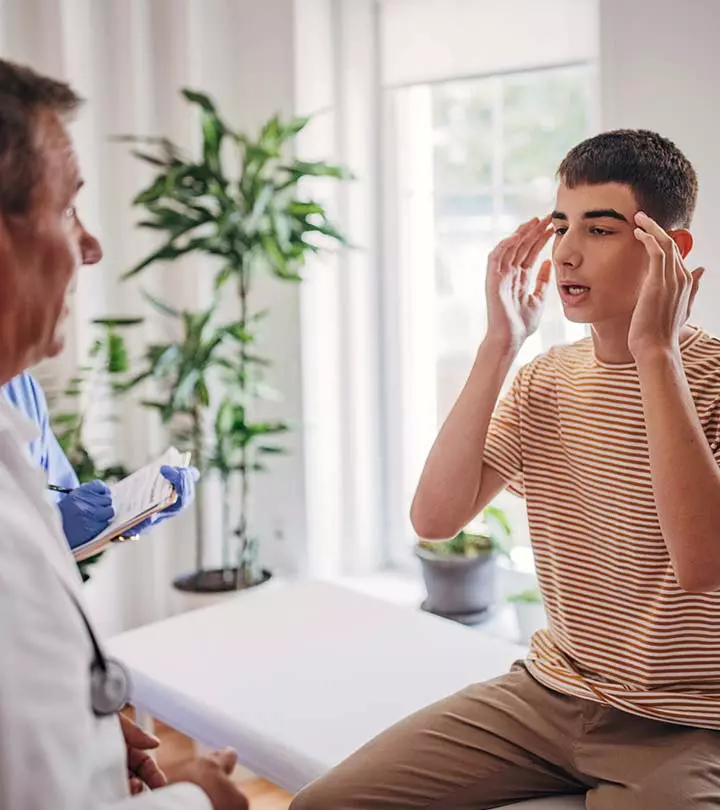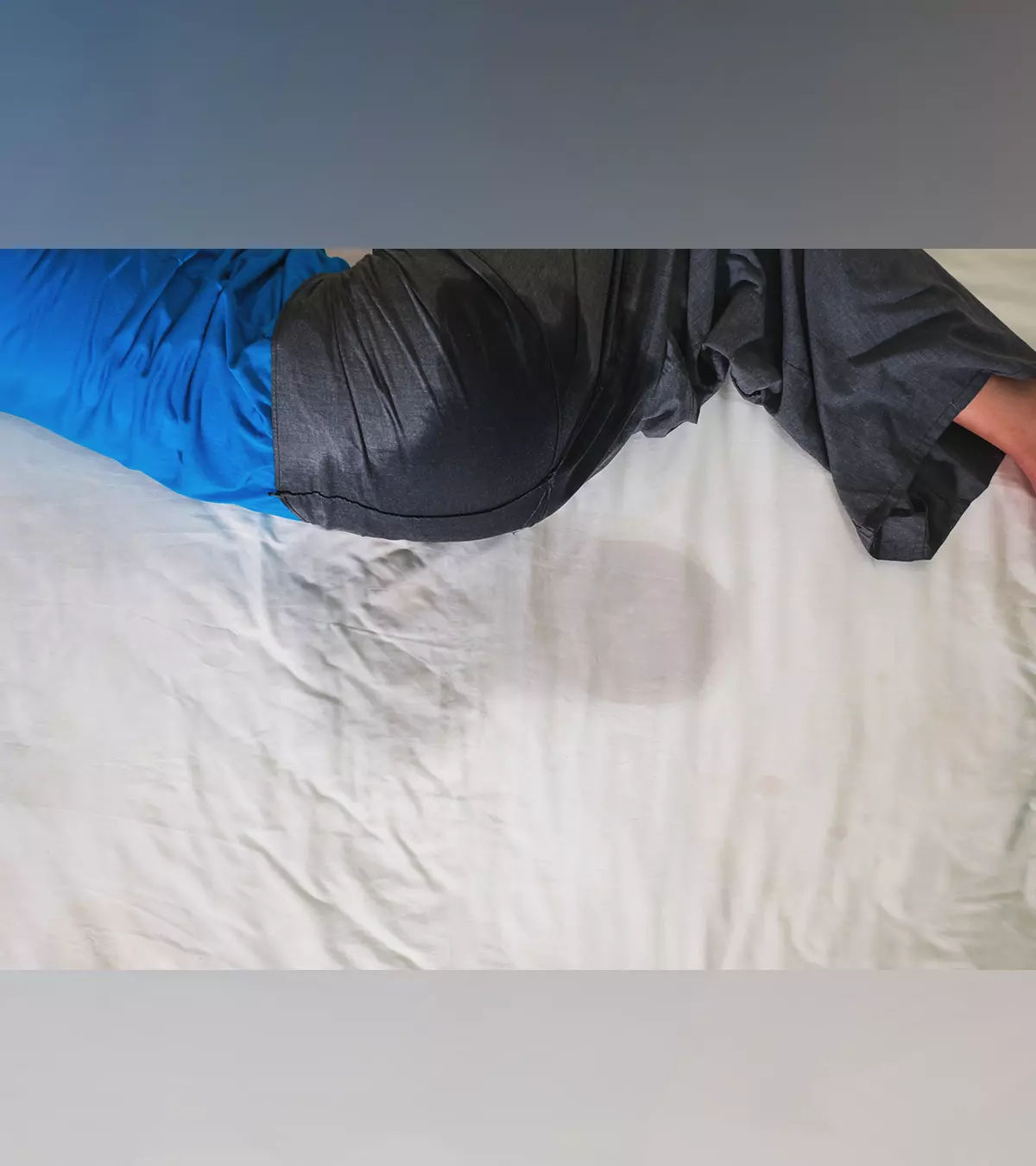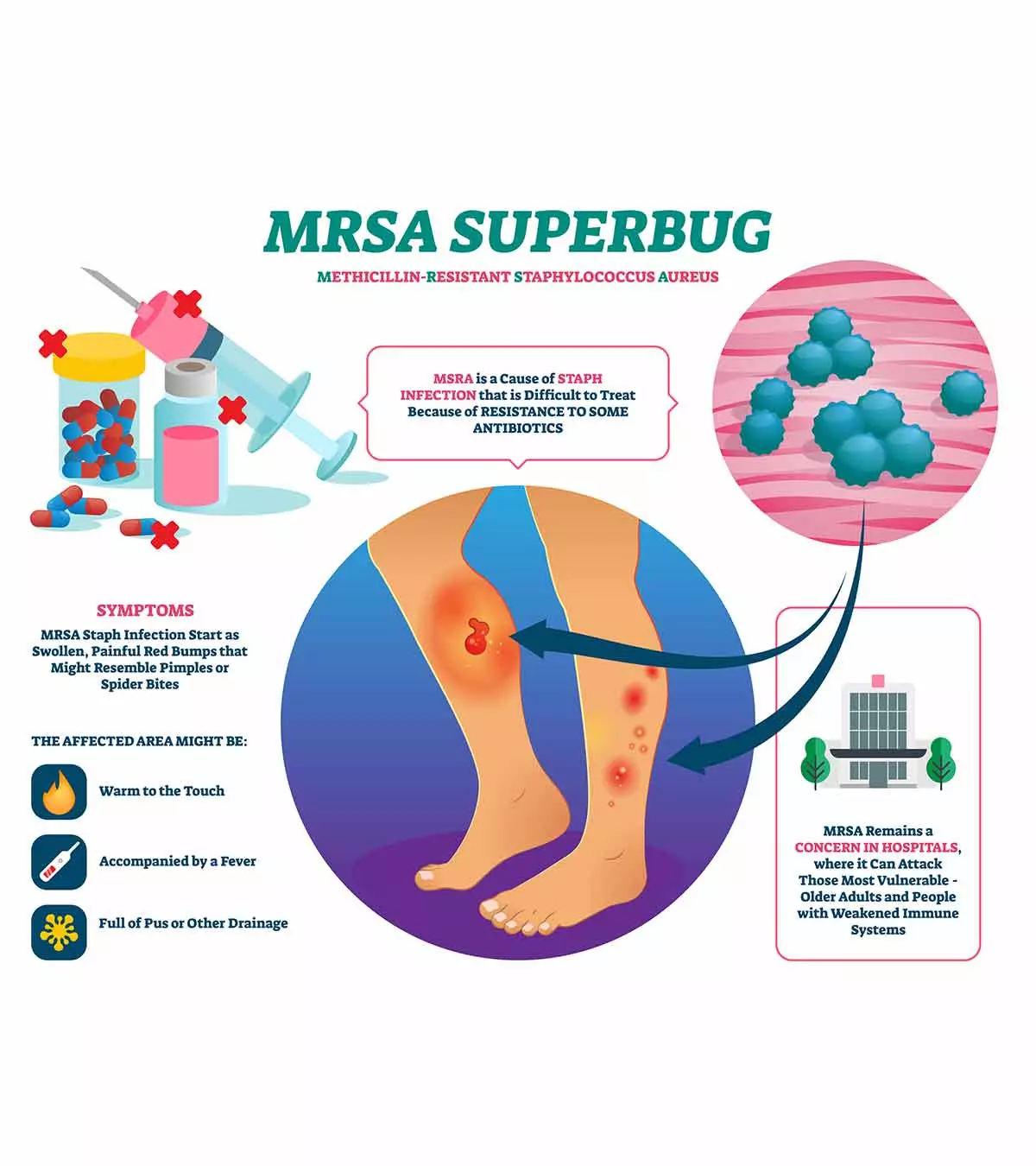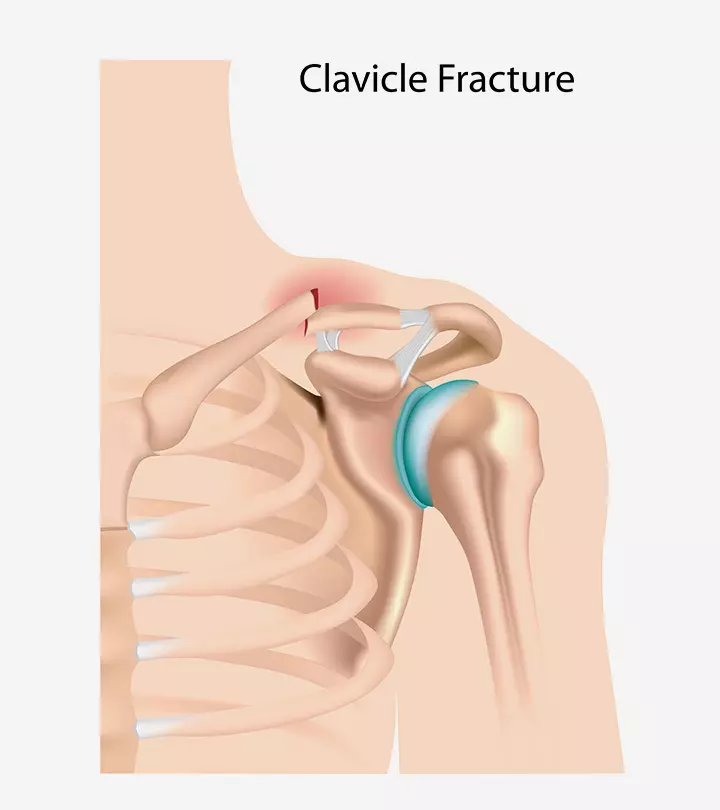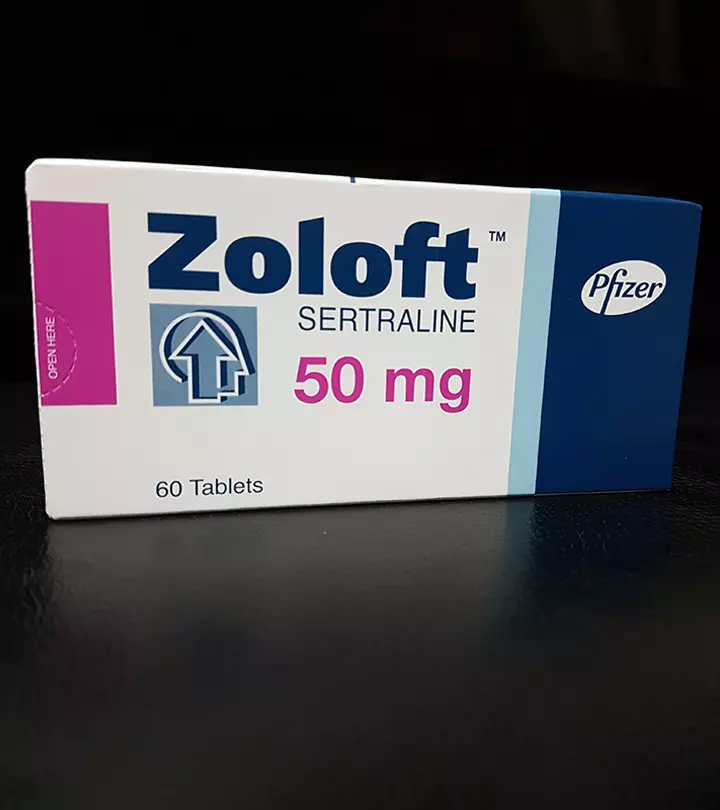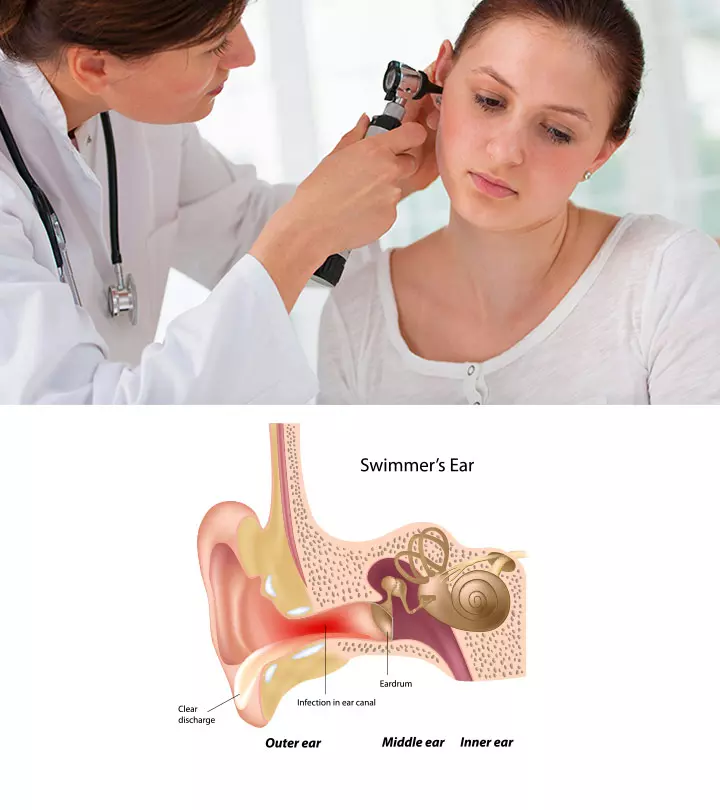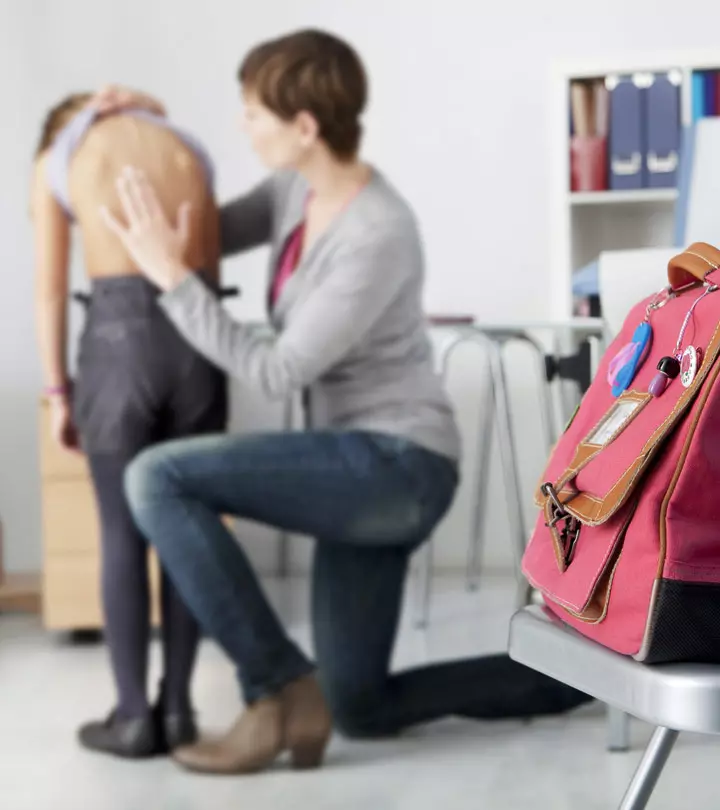
Image: ShutterStock
A broken tailbone in children is a common injury after falling on their back on hard surfaces. This may cause pain in the tailbone while sitting. However, the pain may also be due to bruising since the tailbone rarely breaks in children (1). Pain may also increase during bowel movements. Although most tailbone injuries are cured without interventions, it may take a long time. Seeking prompt pediatric care could help identify the injury and get accurate measures to manage the condition. Read on to learn the causes, symptoms, and management of broken tailbone in children.

Key Pointers
- A broken tailbone in children may occur due to external trauma, prolonged sitting, uncomfortable slumping, sports injuries, or other medical conditions.
- Coccydynia can be indicated by pain when sitting, during bowel movements, pain between the buttocks, and numbness.
- The condition may take eight to twelve weeks to heal and can interfere with a child’s daily activities or play.
- Diagnosis of a broken tailbone is typically made through physical examination and imaging tests such as X-rays.
- Home remedies such as taking breaks from sitting, applying a cold compress, using pain-relieving creams, and eating fiber-rich foods may provide relief.
Signs And Symptoms Of Broken Tailbone In Children
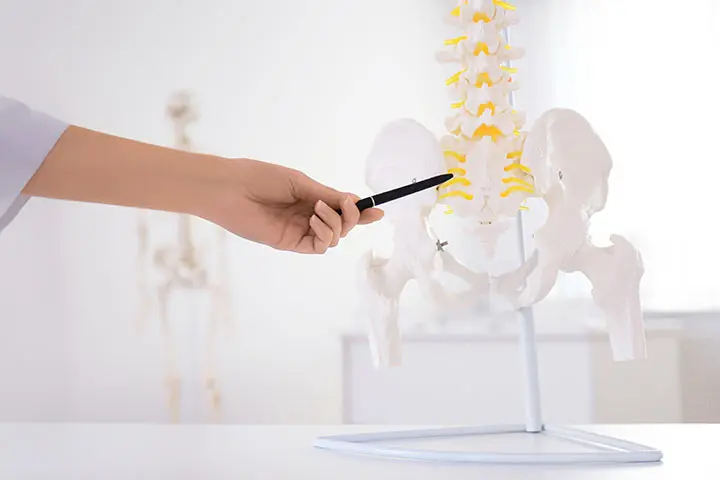
The tailbone, also known as the coccyx, is the last segment of the spine (2). It is situated between the buttocks and provides weight-bearing support when we sit. Although the possibility of breaking the tailbone is less in children, it may occur due to direct-impact injuries. Symptoms of tailbone pain or coccydynia might include:
- Pain in between the buttocks

- Pain while sitting, which might ease while standing or resting
- Numbness and pain that might radiate into the legs due to pressure on the nerves in the tailbone area
- Pain during bowel movements (1)
Knowing what causes tailbone pain might help you understand and deal with this condition better.
Causes Of Tailbone Injury In Children
- Tailbone pain in children could be due to injury or bruising because of external trauma (3). Understanding these causes can help parents prevent injuries and promote safety. The tailbone could be injured or bruised if the child (4):
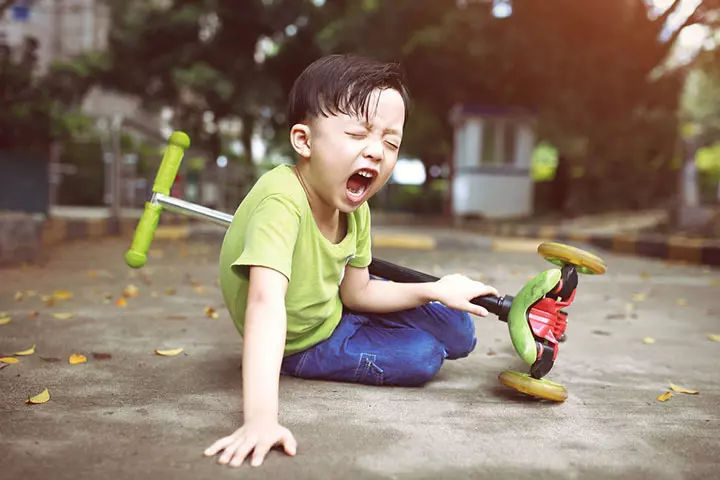
- Falls back onto a hard surface
- Suffers minor trauma due to prolonged sitting, or slumping on hard and uncomfortable surfaces
- Experiences an accident or a fall during ice skating or gymnastics, which could lead to a broken or injured tailbone
- Continuous strain against the coccyx, during activities such as bicycling.
Other than external injuries, joint problems like arthritis, infections in the pelvic region or spine, and rare tumors in the lower spine or pelvic area can all cause inflammation, pressure, and pain in the coccyx (5). Weight also affects the coccyx, as excess weight increases pressure and tilts it backward, causing pain, while too little body fat reduces cushioning, leading to irritation from friction against surrounding tissues (4).
Mild tailbone pain may not be a severe condition as long as it does not interfere with your child’s daily activities; it usually goes away with few home care tips.
When To Take Your Child To A Doctor
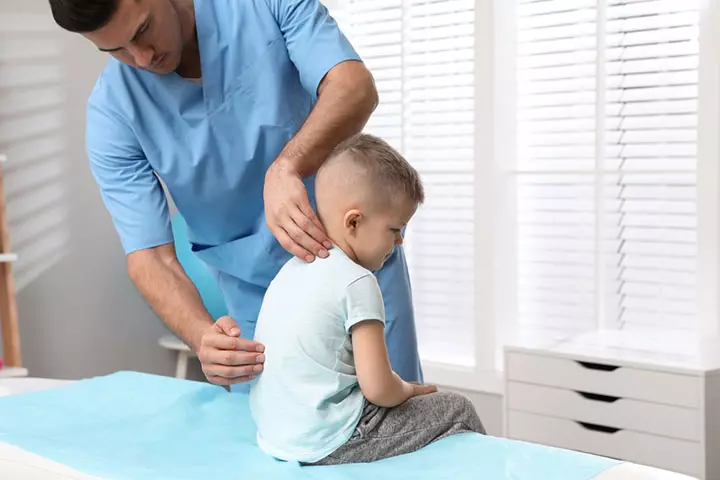
Mild tailbone pain may not require medical attention as it would go away after some time. However, if your child does not show any external bruises or injuries near the tailbone area, but is still complaining about tailbone pain, then it is best to take your child to the doctor.
Also, if the tailbone pain is severe and is interfering with your child’s daily activities, and has additional symptoms such as constipation and loss of bladder control, then it is best to seek medical advice from an expert who specializes in orthopedics. Other signs that warrant a prompt visit to a healthcare provider include persistent or worsening pain despite home care, pain that disrupts sleep, discomfort during bowel movements, blood in the stool, new pain in other areas of the body, or unexplained symptoms like weight loss or night sweats (6).
Diagnosis Of Broken Tailbone In Children
Your child’s doctor would perform an initial physical examination to determine the cause of tailbone pain. They would examine the entire vertebral column and the rectal area to determine the exact cause of the tailbone pain.
If your doctor suspects a broken tailbone, they may also recommend an X-ray to understand further if it is a dislocation or fracture of the tailbone. The doctor may also suggest blood tests if they suspect an infection, unusual healing, or other complications (7).
Treatment For Broken Tailbone Pain In Children
If your child has mild tailbone pain with no additional symptoms and is able to perform daily activities, then medical intervention might not be necessary. Your doctor would examine and advise non-medical options such as (3) (8):
- Use of wedged cushions (coccygeal cushions) to provide support to the tailbone and reduce the pressure over it.
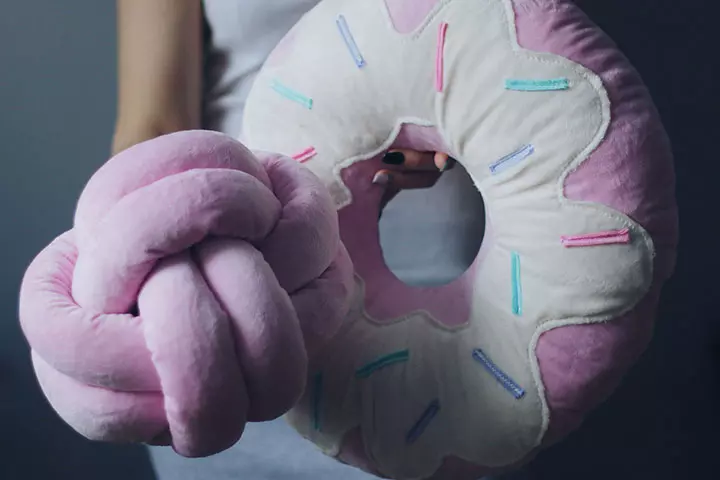
- Use of donut cushions, which could help in reducing coccydynia.
- Encouraging your child to correct their posture and not to slouch while sitting could also help in reducing tailbone pain.
- You can also consult a physiotherapist to teach specific stretches and exercises for kids at home that may help reduce the pain and aid with the necessary rehabilitation.
- Usually, medications such as nonsteroidal anti-inflammatory drugs are prescribed when the pain is severe, and all the other alternative treatment options fail to soothe the pain.
- Stool softeners may be prescribed to prevent constipation.
The doctor may recommend additional options if the above treatments do not provide relief. If an infection is present, antibiotics may be necessary. In sporadic cases where the pain is persistent and significantly affects daily life, surgery (coccygectomy) may be considered to remove the tailbone. However, this is usually a last resort when all other treatments have failed (4).
Home Remedies For Tailbone Pain
Usually, medical treatment is not required for tailbone pain, as it can be managed with home care. The use of these remedies is ideally recommended during the first few days or weeks after the injury.
It is essential that you get the pain checked by the doctor to rule out the diagnosis of a broken tailbone, which needs professional medical care. If it is not a fracture or dislocation, and the child is not showing signs of extreme pain or discomfort, you can try these tips (9).
- Discourage your child from sitting for extended periods. If they have to, instruct them to take occasional breaks, stand up, walk for a few seconds and then sit down again.
- If you suspect tailbone bruising, then apply a cold compress on your child’s tailbone for 20 minutes every hour for the first 48 hours. Continue this for two to three times a day.
- Restrict your child from sitting on hard surfaces; also teach them to sit alternatively on each buttock.
- Encourage gentle stretching movements and fiber-rich food for kids that might ease their constipation.
 Quick tip
Quick tip
- You can also try applying pain-relieving topical creams to help soothe the pain but make sure the application site is not injured or bleeding.
How Long Does A Broken Tailbone Take To Heal?
The healing time for a tailbone injury depends on the extent of the damage (10).
- If your child is diagnosed with a tailbone fracture, then it might take eight to 12 weeks to recover.
- A tailbone bruise could take approximately four weeks to heal (8).
Other Possible Reasons For Tailbone Pain In Children
Sometimes, pain and soreness near the tailbone could occur due to internal trauma, which could be due to a few underlying conditions. Although rare, tailbone pain might also indicate tumors at the base of the spine, or external cysts or sinuses on the skin between buttocks.
Sacrococcygeal teratoma: These tumors are usually non-cancerous and could be removed through surgery. They are mostly present at birth and are discovered when they grow in size. Some of them can be easily seen from outside, while others are hidden in the pelvis.
Small tumors show no symptoms and might get diagnosed during routine ultrasounds. Such tumors could be removed safely after birth. But if the tumors are large, then they might present complications, which is why monitoring and detecting them early on is important by doing routine sonography. Other symptoms include progressive lower back pain and disturbances in the gastrointestinal tract (11).
 Quick fact
Quick factPilonidal sinus and cysts: This is an infectious disease that causes inflammation near the tailbone region, causing soreness and tailbone pain, along with foul-smelling, pus-filled discharge. The treatment options include the application of phenol and surgical removal of the cysts (12).
These conditions may also have other symptoms that might not be present in case of only tailbone injury.
 Point to consider
Point to considerNext, we answer a few common queries about tailbone injuries and pain in children.
Frequently Asked Questions
1. Is a broken coccyx serious in children?
Broken coccyx may not be serious in children as it might heal faster than it does in adults. Most of the time, home care tips would be sufficient to ease the pain.
2. Can a broken tailbone heal itself?
The tailbone could heal itself. However, the time taken for recovery could vary based on the severity of the injury (8). Follow your doctor’s instructions and keep your children away from indulging in activities that can strain the tailbone.
3. What happens if a broken tailbone goes untreated in children?
Growing children tend to have better healing, resulting from which a coccyx injury may heal independently. However, there might be delayed union, aggravated pain, and discomfort if the condition is left untreated.
4. Can a bent tailbone be fixed in children?
Yes. A bent tailbone can be treated, and its treatment depends on the severity and cause of the condition. In most cases, physical therapy may resolve with physical therapy. However, surgical intervention may be needed if the tailbone bent is affecting a child’s daily activities.
5. How can I prevent tailbone pain or fractures in my child?
You may not always be able to prevent tailbone injuries, but you can lower the risk. When doing activities like bike riding, skating, or gymnastics, ensure children wear proper safety gear and are supervised. At home, keep floors clear, ensure stairways have good lighting, and remind your child not to run on slippery surfaces. Teach your child to sit with good posture and avoid sitting too long on hard surfaces. Using a cushion can help provide support (4).
6. What are the long-term impacts or complications of tailbone injury or fracture?
One possible complication is chronic pain, known as coccydynia, which may persist and interfere with daily activities such as sitting or standing for extended periods (7). In some cases, individuals may experience limited mobility, including difficulties with walking or performing routine tasks. Additionally, it may also lead to pelvic floor dysfunction, where the pelvic floor muscles, which attach around the tailbone, are affected. This can, in turn, cause urinary incontinence and pain during bowel movements.
A broken tailbone in children may occur due to a fall on hard surfaces. It may cause problems in sitting, during a bowel movement, or may be characterized by numbness radiating to the legs. Certain sports such as vigorous bicycling, falls during ice skating, or improper posture may also lead to a tailbone injury. In most cases, tailbone pain may resolve by itself. A thorough physical examination and x-ray can help your doctor determine the exact extent and cause of your child’s broken tailbone.
Infographic: What Are The Long-Term Effects Of A Broken Tailbone On Children?
Broken tailbone injuries in children may cause long-term problems, especially if it does not heal well. Pain and swelling can last longer than other fractures, and you must follow the doctor’s instructions to prevent complications. Go through the infographic to know the long-term effects of a broken tailbone on children.
Some thing wrong with infographic shortcode. please verify shortcode syntax
Illustration: Broken Tailbone (Coccyx) In Children: Causes Symptoms And Treatment
_in_children_causes_symptoms_and_treatment_illustration.jpg.webp)
Image: Dall·E/MomJunction Design Team
References
- Tailbone Disorders.
https://medlineplus.gov/tailbonedisorders.html - Coccyx (Tailbone).
https://my.clevelandclinic.org/health/body/coccyx-tailbone - Lesley Smallwood Lirette et.al; (2014); Coccydynia: An Overview of the Anatomy, Etiology, and Treatment of Coccyx Pain.
https://pmc.ncbi.nlm.nih.gov/articles/PMC3963058/pdf/i1524-5012-14-1-84.pdf - Tailbone Pain (Coccydynia).
https://my.clevelandclinic.org/health/diseases/10436-coccydynia-tailbone-pain - Tailbone (coccyx) pain and injury.
https://www.healthdirect.gov.au/tailbone-coccyx-pain-and-injury - Tailbone Pain.
https://www.texaschildrens.org/content/conditions/tailbone-pain - Coccyx Pain.
https://www.ncbi.nlm.nih.gov/books/NBK563139/ - Tailbone trauma – aftercare.
https://medlineplus.gov/ency/patientinstructions/000573.htm - Tailbone Pain: Why You Might Have It and How to Treat It.
https://www.hss.edu/article_tailbone-pain.asp - Tailbone trauma – aftercare.
https://www.mountsinai.org/health-library/selfcare-instructions/tailbone-trauma-aftercare - Sacrococcygeal Teratoma.
https://rarediseases.org/rare-diseases/sacrococcygeal-teratoma/ - Ufuk Ates et.al; (2018); Pilonidal sinus disease surgery in children: the first study to compare crystallized phenol application to primary excision and closure.
https://pubmed.ncbi.nlm.nih.gov/28549686/
Community Experiences
Join the conversation and become a part of our nurturing community! Share your stories, experiences, and insights to connect with fellow parents.
Read full bio of Dr. Sameh Mahmoud Shehata
Read full bio of Dr Bisny T. Joseph
Read full bio of Swati Patwal
Read full bio of Anindita Ghatak






